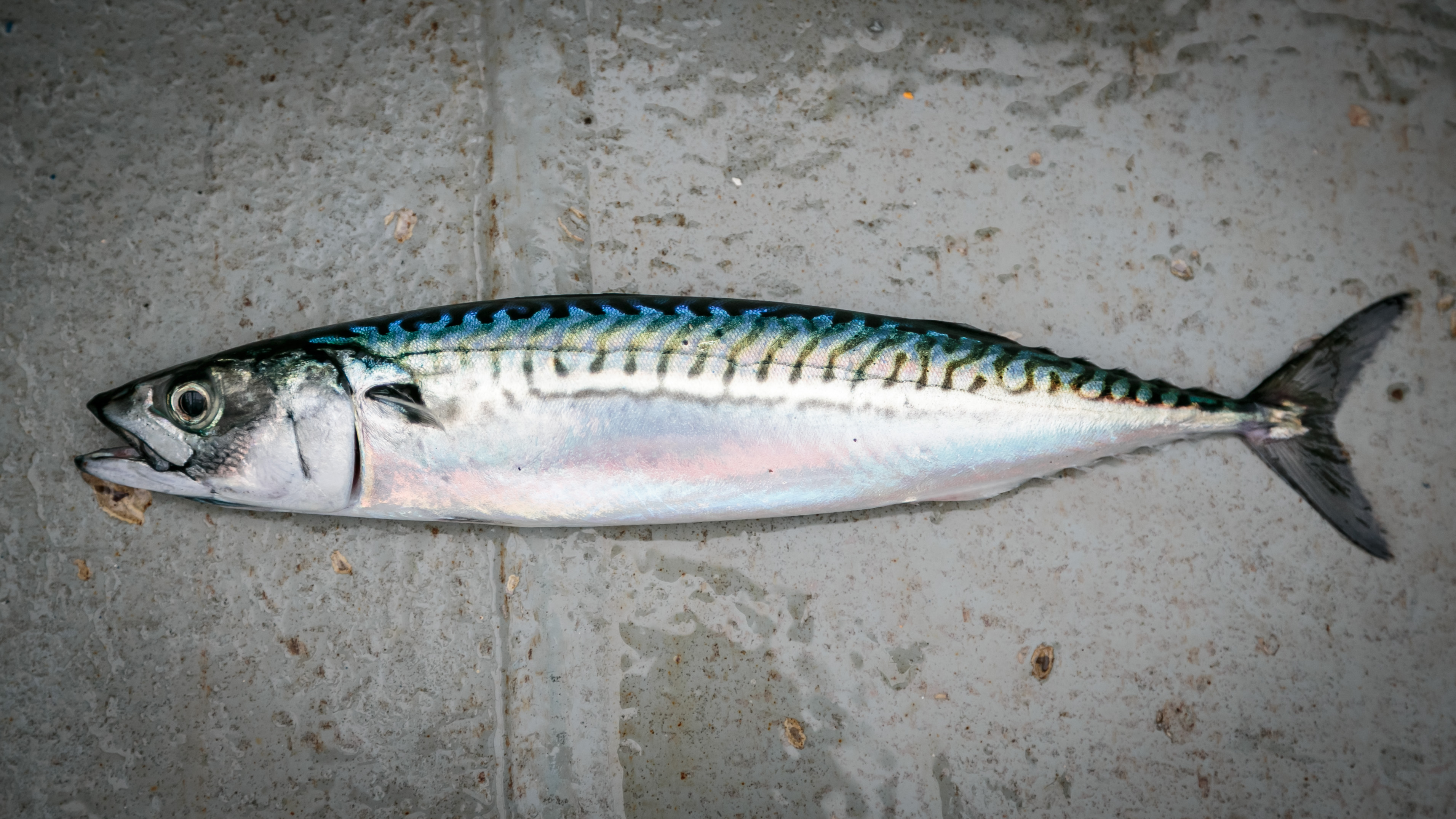Topic: Mackerel

The mackerel is usually less than 1 kg.
Photo: Erlend Astad Lorentzen / Institute of Marine Research
The fishery on mackerel is one of the biggest in the North Atlantic.
Photo: Institute of Marine Research
The mackerel feed on a variety of zooplankton and small fish.
Photo: Institute of Marine ResearchPublished: 02.06.2022
The fishery on mackerel is one of the biggest in the North Atlantic, with first sale value over 10 billion NOK (€1 billion), and recent international catches of approximately 1 million tonnes. Mackerel is sought after for its healthy meat, high in oil content and omega-3 fatty acids among other nutrients.
Geographic distribution
The Atlantic mackerel (Scomber scombrus) was first described in 1758 by Carl Linnaeus. Atlantic mackerel occurs on both sides of the North Atlantic. Northeast Atlantic (NEA) mackerel is found in a huge area extending from the Iberian Peninsula in the south to the northern Norwegian Sea up to Svalbard in the north, and Iceland and Greenland in the west to the western Baltic Sea in east.
In the mid-2000s, summer feeding distribution of NEA mackerel in Nordic Seas began expanding into new areas far to the north and to the west.
Mackerel is a fast-swimming schooling pelagic fish, and feed on a variety of zooplankton and small fish. The mackerel seems to be very opportunistic, and they may exploit any available oceanic areas for feeding purposes from one year to the next. Feeding patterns vary seasonally, spatially and with size. Mackerel stops feeding almost completely during winter.
Fishery
The fishery on mackerel is one of the biggest in the North Atlantic, with first sale value over €1 billion, and recent catches of approximately 1 million tonnes. In the eastern Atlantic Ocean there are three stocks differentiated by location and time at which spawning occurs, but studies have not found any distinct genetic differences between these populations. The NEA mackerel is thus managed and fished as one stock. As a widely distributed and migratory species, NEA mackerel is exploited over a wide geographic range throughout the year.
In Norway the mackerel is fished inside fjords, along the coast, in the North Sea and Norwegian Sea. Norway is annually catching around 20% of the international quota on NEA mackerel, representing in the range of 200 000 tonnes annually. Most of the Norwegian catches are taken by different sized purse seine vessels, targeting mackerel during their return migration from their feeding grounds in northern waters and overwintering areas close to the Norwegian coastline. Prior to the onset of this migration, the mackerel are overwintering and are targeted by a large Norwegian purse-seine fleet. Norway has also handline fleets operating inshore in the Skagerrak, western coast and Lofoten in northern Norway, as well as a small gillnet fleet. Mackerel is sought after for its meat, which is strong in flavour and high in oil content and omega-3 fatty acids among other nutrients.

